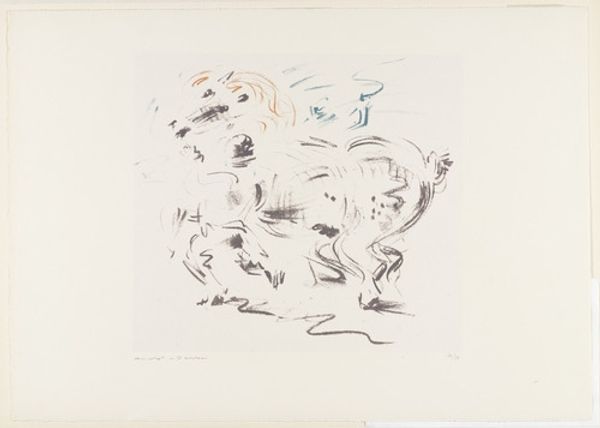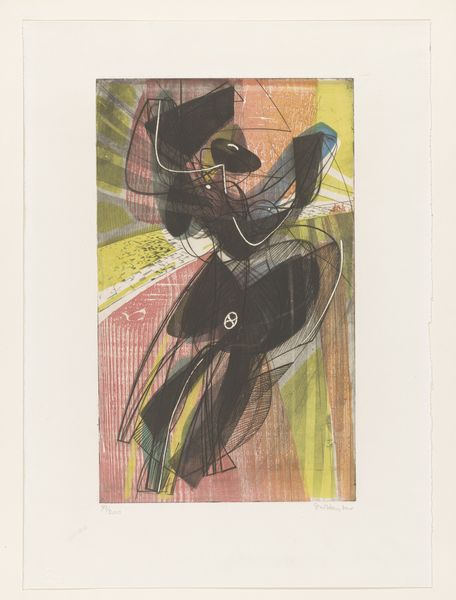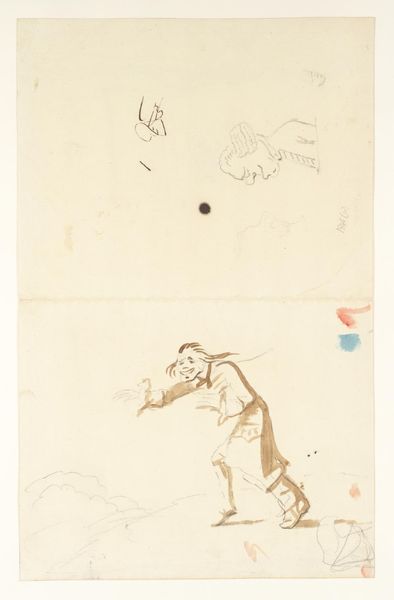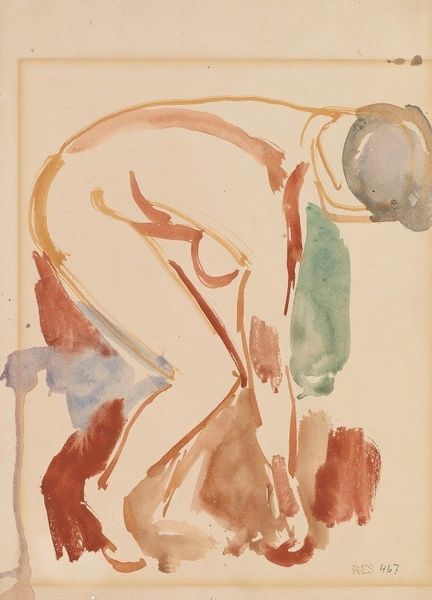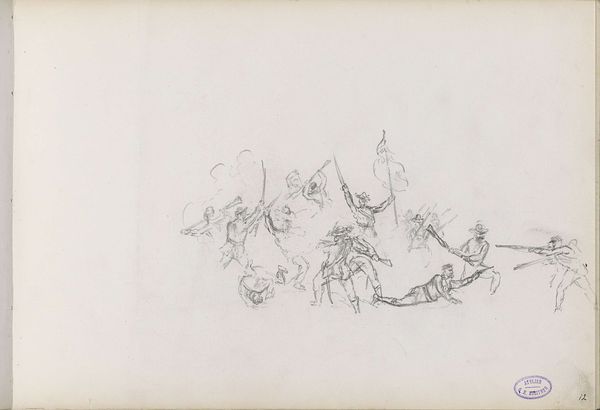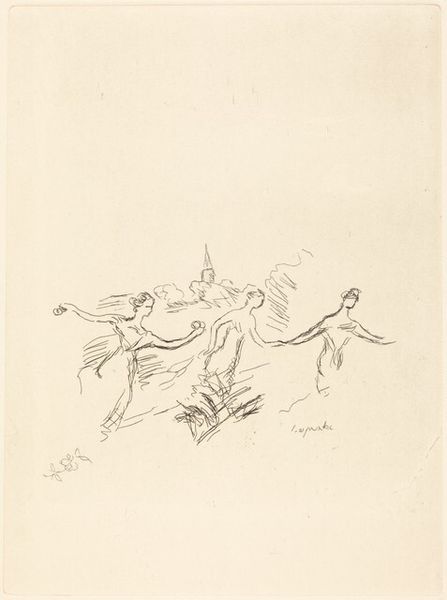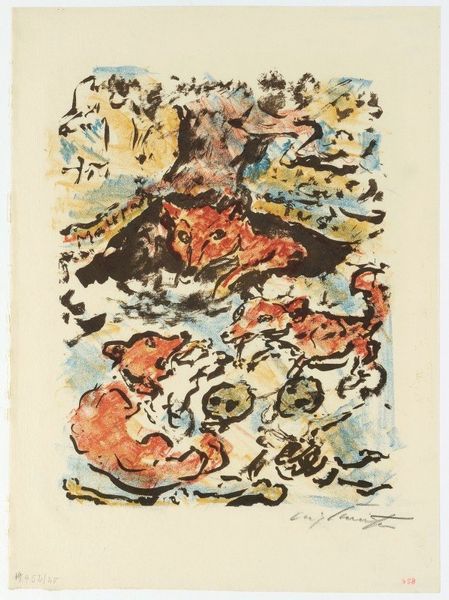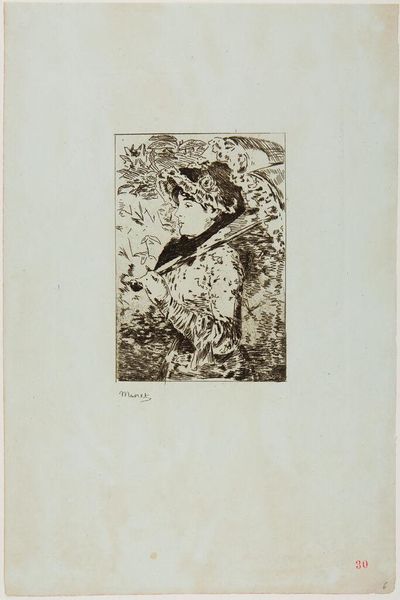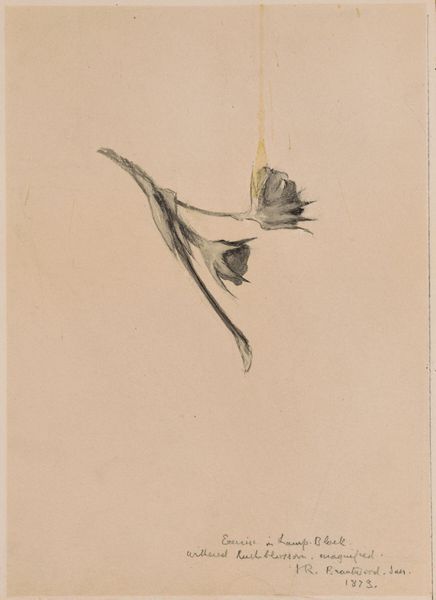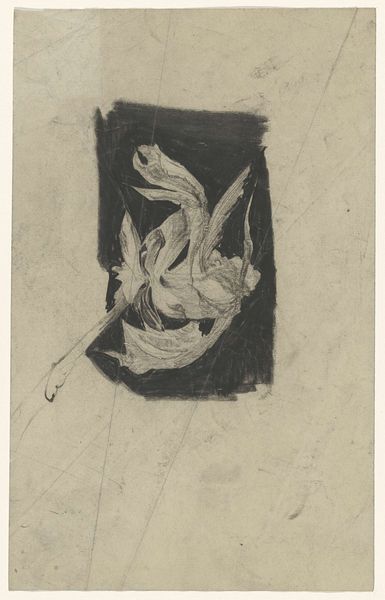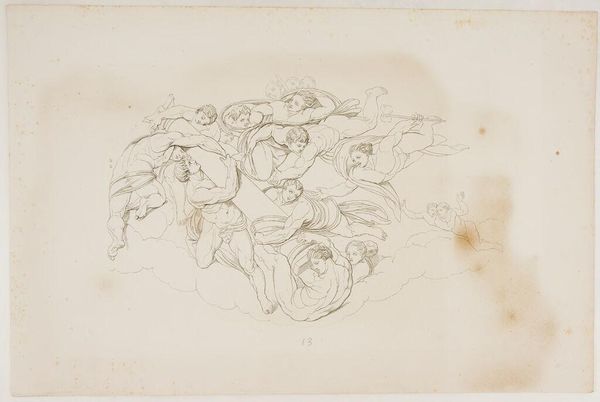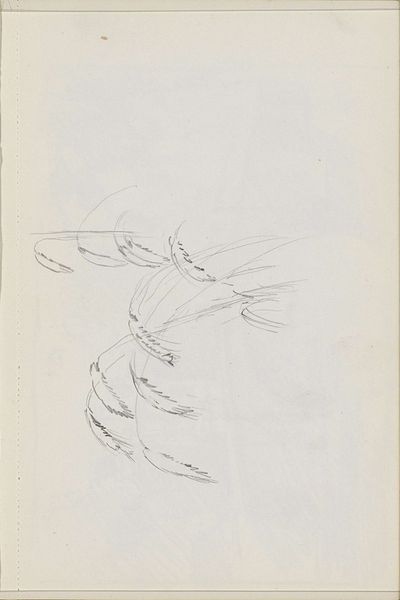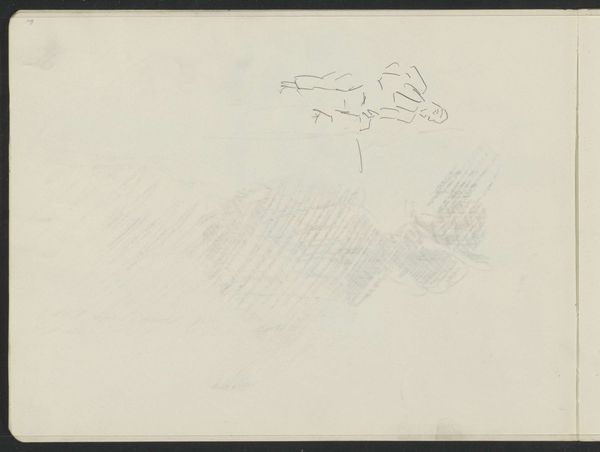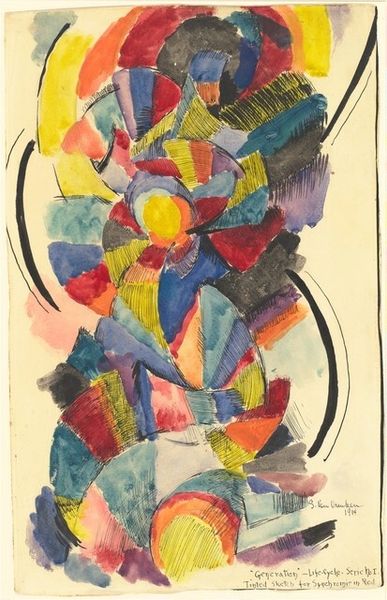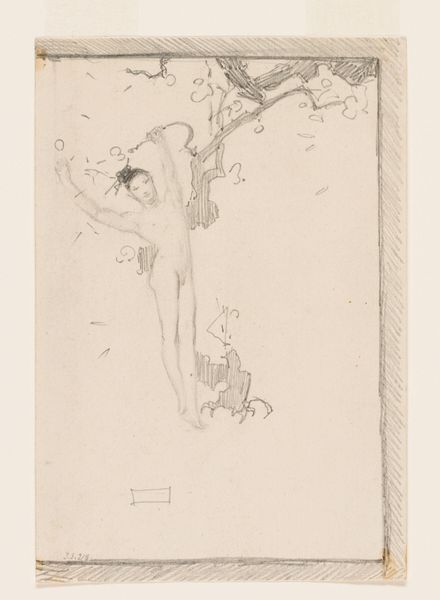
drawing, watercolor
#
portrait
#
drawing
#
figuration
#
watercolor
#
coloured pencil
#
modernism
Dimensions: image (irregular): 19.69 × 22.86 cm (7 3/4 × 9 in.) sheet: 31.43 × 27.94 cm (12 3/8 × 11 in.)
Copyright: National Gallery of Art: CC0 1.0
Editor: Elsie Driggs’ “Merrymount”, created in 1934, is a whirlwind of watercolor and coloured pencil on paper. It depicts a group of figures in motion. It’s hard to tell exactly what they are doing, but there’s definitely a sense of energy and drama, even chaos. How do you interpret this work? Curator: Oh, "Merrymount!" Elsie, you cheeky minx, wrestling with Puritan severity and Dionysian revelry all at once. What a vibrant paradox! For me, the swirling colors become this intuitive dance. A push and pull that feels intrinsically human. I love the almost unfinished quality of the line work. Editor: Unfinished? Curator: Yes, like a half-remembered dream. Look at how those bold colors – the fiery reds and earthy ochres – seem to melt into the softer, muted tones of the other figures. The watercolor is so ethereal. Do you think this contributes to the feeling of dynamism? Editor: Absolutely. It’s like they’re fading in and out of existence, capturing a fleeting moment. Like a memory of rebellion? Curator: Precisely! Driggs evokes the Merrymount colony and all its historical baggage. A moment of radicalism or anarchy! Do you think the "unfinished" aspects allow for multiple interpretations and invite the viewer to fill in the blanks, drawing their own conclusions about this historical event? Editor: I do. I initially felt confused by its chaotic nature, but the ambiguity really opens it up to different perspectives. Curator: Wonderful. That's art sparking those neurons. Editor: I’ll never look at early American history the same way again. I love the way it blends real life and fantasy. Thanks for all that great context.
Comments
No comments
Be the first to comment and join the conversation on the ultimate creative platform.
